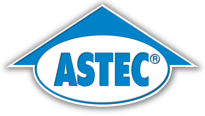Fluid-Applied Roofing for Repair and Renovation
For those private universities who include being "green" into their mission statement, fluid-applied roofs can offer numerous benefits. Because extensive roof tear-off is not required, the negative environmental impact of using land fill space is avoided.
Leaking roofs are one thing which every private university facility management office has to contend with. Regardless of the building use (housing, academic, recreation or food service) roof leaks can cause interruptions, inconveniences and safety issues which cannot be tolerated and quickly become a top priority.
The options for roof repair and re-roofing are numerous. From single-ply membranes to asphalt based materials to metal sheeting, the choices are extensive. The selection process can be overwhelming and confusing. Should the same roof system that is now failing be used again, can long-term repairs be made or is a full roof tear-off and replacement the better route?
One option to consider for many roof problems is the installation of a fluid-applied roof. Fluid-applied roofs have systems for a variety of roof types including asphalt, single-ply membranes and even metal roofs.
Although fluid-applied roof systems have been very successfully applied to roofs for well over thirty years, they are still not as well-known as conventional roof systems such as asphalt or rubber membrane. One of the biggest advantages of fluid-applied systems is that they are installed directly to the existing roof surface in multiple layers to renew the waterproofing properties of the substrate. This means substantially reducing the costs associated with extensive roof tear-off and mitigating the growing environmental impact of landfills.
Additionally, fluid-applied systems add minimal weight to the roof structure, and many building codes have permitted them when the "legal limit" of two conventional roofs has already been installed. Since minimal tear-off is required, down time in facilities selecting these systems is also minimal or in many cases non-existent.
Many fluid-applied manufacturers are using low VOC (volatile organic compound), water-based materials, which virtually eliminates any of the offensive odors associated with some types of conventional roofing.
Some of the quality fluid-applied roof systems are installed only by factory-trained and authorized contractors and carry 10-20 year warranties backed by the manufacturer. A number of manufacturers offer the longer term warranties with specifications for a fully reinforced roof system application. This first requires a thorough cleaning of the roof and remedial roof repairs to be made.
Following that, multiple layers of a waterproof base coat, reinforced with polyester cloth (for tensile strength) are applied to the now-prepared roof surface. Once the waterproofing process is complete, multiple layers of a solar reflective finish coat are applied. The end result is a seamless, fully adhered, often highly reflective "cool roof" that has long term renewable sustainability at a substantial savings over conventional roofing systems.
The energy saving benefit associated with a "cool roof" installation is very significant. The highly solar reflective finish material have been proven to lower surface temperatures by up to 65°F, resulting in air-conditioning energy savings as high as 40% when installed over dark surfaces.
This also has the added benefit of reducing air-conditioning equipment maintenance and extending the life of the equipment as well. The A/C units simply do not have to work as hard to maintain comfortable temperatures inside the building.
The fully reinforced specification is also perfect for low-sloped roofs. Some of today's fluid-applied systems use advanced polymer technology incorporated in the multiple layers allowing the roof to standup to ponding water situations.
Looking into the future, some fluid-applied systems offer the unique the option of having the warranty renewed at the end of the warranty period. After inspection and possible minor repairs, the roof substrate can be thoroughly cleaned and another 20-30 mils of the reflective finish material installed. The reduced labor and material costs for this renewable process is also what reduces the life-cycle cost of fluid-applied roofing systems.
Another reason the renewable system has long term sustainability is the high reflectivity of the roof. Damaging UV rays, which can shorten the effective lifespan of other conventional roofs, are reflected away by the finish coat, protecting the waterproofing base coat. Since the waterproofing properties aren't lost over time, a reapplication of finish materials renews the properties of the roof to day-one performance. The renewed warranty for both materials and labor speaks to the manufacturer's confidence in the long term sustainability of their fluid-applied roofs.
For those private universities who include being "green" into their mission statement, fluid-applied roofs can offer numerous benefits. Because extensive roof tear-off is not required, the negative environmental impact of using land fill space is avoided.
Many fluid-applied 'cool roof " systems qualify for multiple U.S. Green Building Council LEED (Leadership in Energy & Environmental Design) points helping buildings qualify for LEED certification.
It is important to note that not all roofs qualify for fluid-applied roof systems. For those heavily water saturated or highly neglected roofs, it is likely they won't make the cut. But for roofs that do qualify, fluid applied is a smart choice and helps provide huge savings, performance and energy efficiency.


